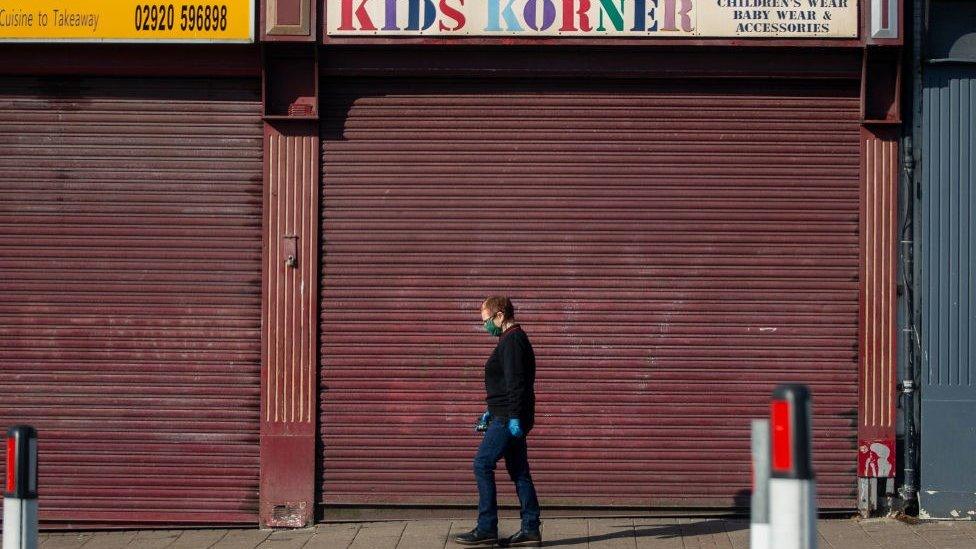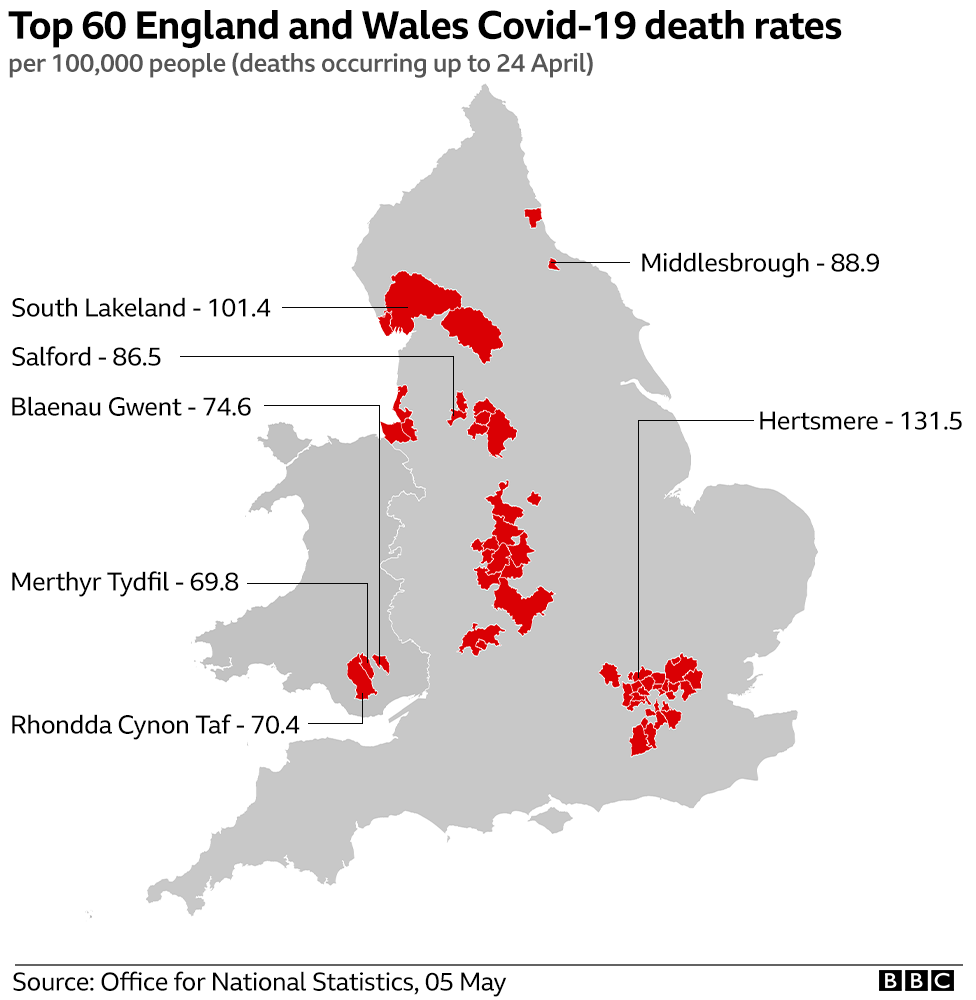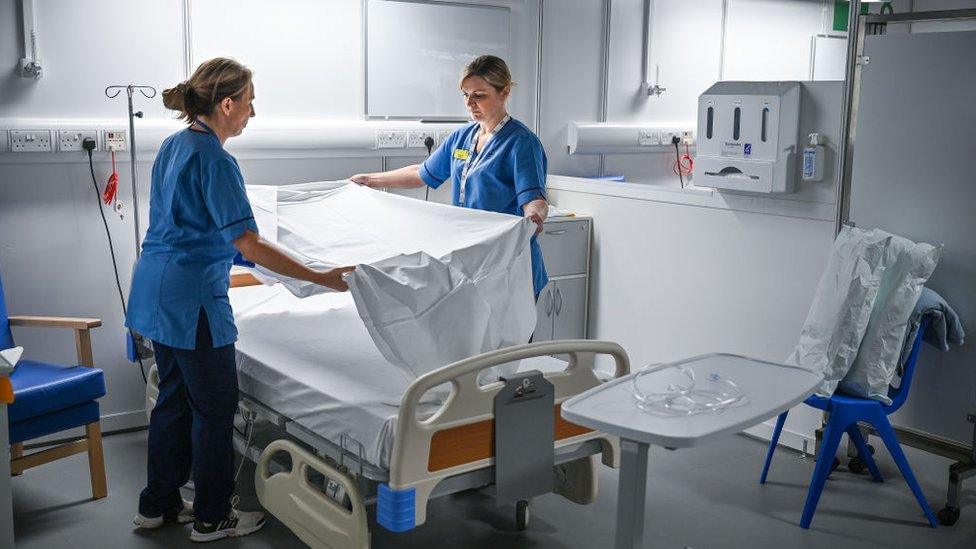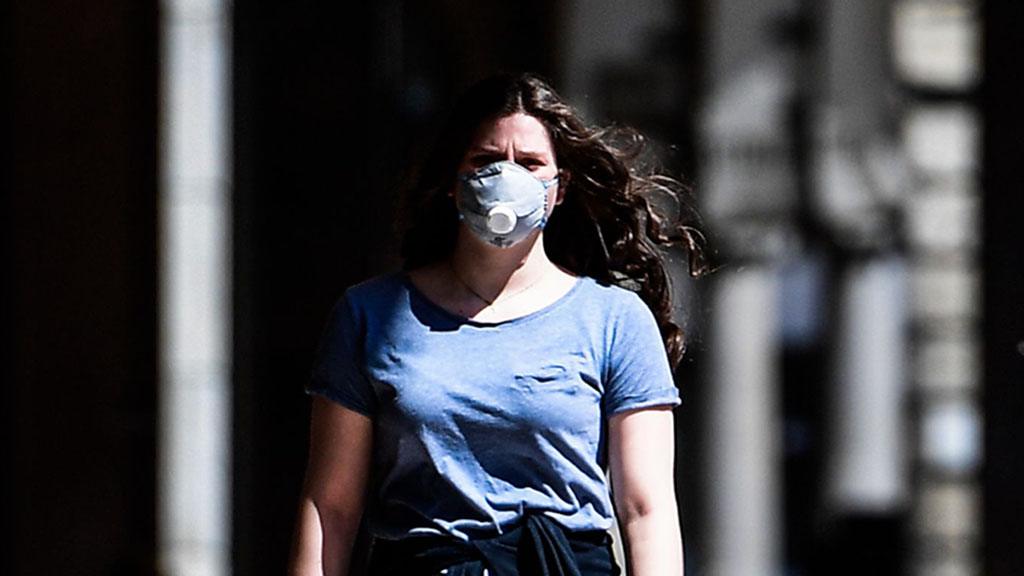Coronavirus: Caution as Wales 'passes the peak'
- Published

Closed shops and few people around in Ely, Cardiff
Wales seems to have "passed the peak" in coronavirus cases, according to Public Health Wales.
But health officials - and politicians - have urged people not to be tempted to break social distancing restrictions over the coming bank holiday weekend.
First Minster Mark Drakeford urged caution and said the virus was still circulating "close to the level which would put us back in danger."
"The crisis is certainly not over, even as some signs improve," he added.
According to the latest figures from the Office for National Statistics (ONS), there have now been 1,376 Covid-19 deaths registered in Wales up to 24 April. The weekly rate of increase has slowed down to 24%.
Allow X content?
This article contains content provided by X. We ask for your permission before anything is loaded, as they may be using cookies and other technologies. You may want to read X’s cookie policy, external and privacy policy, external before accepting. To view this content choose ‘accept and continue’.

Latest PHW figures suggest there have been 1,044 deaths - but this includes mostly hospital deaths and not those in care homes or people dying at home.
We can also see how the positive cases have spread around Wales - and how the curve has flattened out.
Two months ago, there was a "best guess" from Wales' top doctor that we would peak at the end of May and the start of June, but lockdown measures have helped reduce the number of people in hospital.
The picture can be varied, in different pockets locally, although so far north and west Wales have felt less of an impact than many feared.
The virus in north Wales
At the start of the pandemic, health officials were expecting north Wales and parts of west Wales to be experiencing the virus later on.

Certainly, that has been borne out by both the number of positive cases and deaths in the most westerly areas of Wales.
Anglesey has the third fewest deaths of any part of England and Wales, according to the latest ONS figures.
Flintshire, near the border with north west England, has the most deaths in the north Wales region.
But Conwy, Denbighshire and noticeably Wrexham have seen recent rises.
Unlike parts of south east Wales, only Gwynedd had seen a significant proportion of deaths in care homes in the last week. Most are still in hospital.

The daily figures published by Public Health Wales showing the positive cases of Covid-19 also show the rate - when we take population size into account - has had particular jumps in Conwy and Denbighshire.
With currently 304.2 positive cases per 100,000 of the population - 290 in number - Denbighshire is highest. This is still below the Wales average - driven up by higher rates in south east Wales.
Dr Dylan Parry, a GP based in Old Colwyn, said: "From our perspective here in Conwy - in Denbighshire also - what I have noticed is that the percentage weekly increase in Covid-19, during the last three weeks, has doubled.
"In comparison with areas such as Gwent I think we are at least two weeks behind. The big question is what happens when the government eases the lockdown restrictions. That has to be done with extreme caution."
Anglesey is second lowest to Ceredigion for numbers of cases, which are still in double figures for the time being.
Darren Millar, Member of the Senedd (MS) for Clwyd West, said although he was concerned the virus was spreading in north Wales at a different rate to other parts of Wales and the UK, he would not support a regional approach to lifting lockdown restrictions.
"I still get the impression that we're two or three weeks behind the curve in north Wales as far as the spread of the virus is concerned," he said.
"The overall picture is complicated, but if you just look at hospital figures alone, it's clear that north Wales is behind the UK and the Wales-wide trend.
"I'm not in favour of lifting lockdown restrictions on a regional basis. I represent a tourism area, and the minute you open up any part of England or Wales, you'll get more people wanting to come and visit.
"Getting the timing wrong will threaten both residents, tourism businesses and the visitors themselves. It shows how any suggestion of a regional difference in lockdown is risky."

Is the virus in the Gwent valleys passed its peak?
Early on in the pandemic, the hot spot of cases in the Aneurin Bevan health board area was highlighted.
There were fears the Gwent valleys would become "another Italy".

There had been more deaths in hospital of patients from Caerphilly than Cardiff in the first two weeks when the pandemic was starting to bite.
Even now, the area with the highest death rate in Wales is Blaenau Gwent, which has 74.59 deaths per 100,000 of its population.
The ONS figures are a little behind what might be happening here and now but 56 deaths across the health board area in the week ending 24 April - nearly two thirds in hospital - are unlikely to give too many predictions that the problems are over.

The rates of positive tests though, as published daily by PHW, show the rate of increase has slowed in some areas, like Caerphilly and Torfaen.
In Newport - once the highest in Wales - it is still climbing steadily but has been overtaken by Cardiff and Rhondda Cynon Taff with Swansea now not far behind.

What about in mid and west Wales?
Swansea is the exception here, perhaps not surprising as the main urban area in the region. The city has seen 45 deaths registered in the week ending 24 April, although the rate of increase has slowed. More than a third of these were in care homes.
In Powys, half of its 18 deaths were in care homes. Three of the five deaths in Carmarthenshire were also in care homes. Death numbers have been low in Pembrokeshire and Ceredigion.
Hywel Dda health board - responsible for Carmarthenshire, Ceredigion and Pembrokeshire - has been seeing lower than expected numbers of Covid-19 patients being admitted to its hospitals, after initially expecting to see a peak at the end of May.
Across Wales, the number of people in hospital with the virus is now below 900.
In west Wales, hospitals are seeing between 50 and 110 cases at any one time.
But this is an important tourism area, so health officials will be hoping the "visit Wales - later" message continues to be heeded, while its field hospitals will remain in place in case.
Director of operations Andrew Carruthers said: "We are grateful for the government restrictions and the co-operation of our communities to practise social distancing as potentially our number of cases and deaths could have been experienced at a higher level and in a spike that would have overwhelmed our local hospital services."
He believes predicting what happens next depends on restrictions and compliance.
"We would currently expect activity to remain fairly constant in the coming weeks, with potential for a higher level of activity in the summer, but still at a much lower level to those original estimates," he said.
"This is of course subject to change and our main concern and appeal is for our communities to continue to follow government restrictions and to practice social distancing."
Other parts of south Wales

The two areas with the highest numbers of Covid-19 deaths so far in Wales are in Cardiff and Rhondda Cynon Taff.
They also have the highest rates of cases of the virus, even allowing for the size of the populations in these urban areas.
Both, along with most of its neighbouring areas, have experienced fewer deaths in the week ending 24 April though, so there will be hope this becomes a trend.
Half the deaths in Merthyr so far have been in care homes, and the proportion has been rising.

An empty car park at an Ikea store at a Cardiff retail park
What happens now?
Health officials and governments across the UK are determined to try to stop a second wave. as they look towards easing the lockdown.
Scientists have warned the risk of further waves are "ever present."
Dr Giri Shankar, incident director at PHW, urged people not to be tempted to break social distancing restrictions over the coming bank holiday weekend.
He said they wanted people to keep to restrictions on "non-essential travel, caravan and campsites, hotels, B&Bs and holiday accommodations, as well as the limited access to our national parks".
Police and Crime Commissioner for North Wales, Arfon Jones, said he believes it is "too soon to relax" until at least the end of May because the peak has not yet arrived in his region.
"The number of cases in Anglesey and Gwynedd seem to be on the increase, the numbers in Denbighshire Flintshire and Wrexham are quite high as they are," he added.
- Published28 May 2024

- Published6 May 2020

- Published7 May 2020
